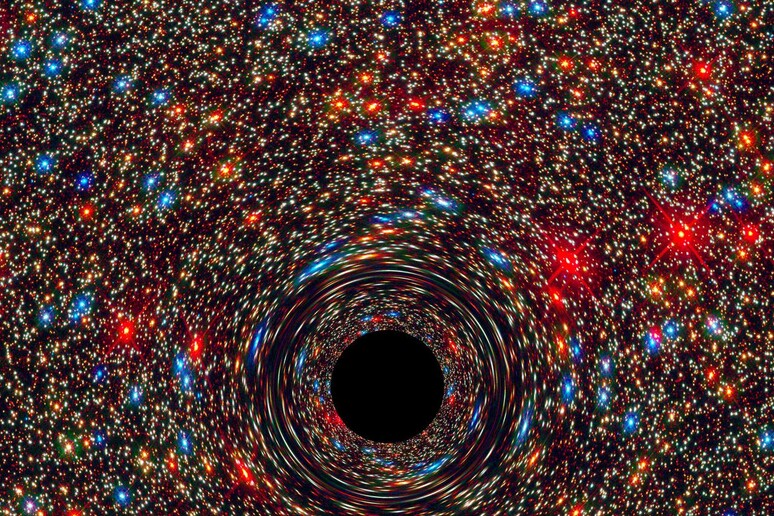The fate of black holes has been explored for the first time thanks to complex numerical simulations, which shed some light on one of the greatest unsolved mysteries in physics: what happens to these objects when they evaporate, a phenomenon predicted by the celebrated physicist Stephen Hawking but so far never observed
The simulation, published in the the journal Physical Review Letters, was developed by Sapienza University of Rome and the Italian National Institute of Nuclear Physics (INFN), in collaboration with the Danish Niels Bohr Institute.
The results suggest that the evaporation of the black holes formed in the early moments of the lufe of the universe could also explain the elusive nature of dark matter. One of the results obtained by the researchers, led by Fabrizio Corelli of Sapienza and INFN, is the possibility that the shrinking black hole could reveal its hidden inner 'gravitational singularity'. In fact, every black hole contains a singularity, that is to say a point, predicted by Albert Einstein's general relativity, in which the density of matter reaches values so high and in a volume so small as to cause a gravitational collapse of space-time. It is thought that the Big Bang may also have originated from one of these singularities.
This first scenario, however, would violate another theory, which states that the singularity can never emerge outside of the black hole. A second, equally fascinating, alternative says that black holes could turn into the famous and evocative “wormholes”, also predicted by Einstein's general relativity. A wormhole is a tunnel that connects different points in space-time and would be a perfect candidate to explain dark matter. "It is inevitable that, during evaporation, gravitational effects become increasingly important, to the point of modifying the final result," Corelli notes. "This is the reason why - he concludes - it is particularly interesting to study these phenomena
Riproduzione riservata © Copyright ANSA













